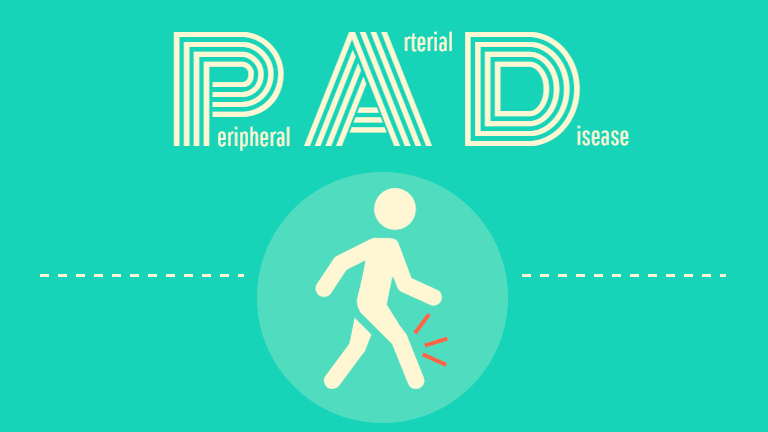Peripheral Artery Disease (PAD) affects the circulation in your legs and can leave your legs feeling tired, heavy, or in pain. Lack of awareness about this condition can lead many to think that leg pain is simply a part of aging — 75% of people don’t know they have PAD. If left untreated, PAD can lead to more serious issues like sores on your foot or shin, which can deteriorate to the point of gangrene. Symptoms of PAD can also be a warning sign for heart attack or stroke. At UVA Radiology, we want you to be aware of the warning signs of PAD and the minimally invasive treatment options our Interventional Radiologists provide so that you can seek help as soon as possible.
Are you listening to your body? It can be easy to ignore aches and pains; to brush them off as just a normal part of getting older. But sometimes, it’s more than just a muscle cramp or achy feet. Sometimes, there is an underlying reason you are experiencing aching and discomfort in your legs — it could be PAD.
What is Peripheral Artery Disease (PAD)?
Peripheral Artery Disease (PAD) occurs when fatty deposits build up in the arteries and restrict blood flow. These deposits are called atherosclerosis, a hardening and narrowing of the artery wall and/or narrowing of the artery lumen (the space in the artery blood moves through). Atherosclerosis is the underlying cause of PAD symptoms like pain, numbness, weakness in the legs, or open sores on your feet. Left untreated, atherosclerosis can lead to heart attack, stroke, and other cardiovascular diseases.
Part of what makes PAD problematic is that it often goes untreated. It’s estimated that 8-12 million Americans have PAD, and 20% of adults over the age of 65 suffer from the disease. Unfortunately, it’s also estimated that millions of people with PAD go undiagnosed and untreated for this disease and as a result, deal with daily discomfort, reduced quality of life, and potentially serious medical issues.

Symptoms
PAD can exhibit a variety of symptoms. Some are easy to ignore, but if you find yourself dealing with one or more symptoms regularly, it’s important to talk to your doctor about it.
Symptoms of PAD include:
- Pain or weakness in legs while walking that is relieved by resting
- Aching pain or numbness in feet or toes (sometimes even while resting)
- Cold legs or feet
- Skin color changes in legs or feet
- Ulcers or sores on heels or toes that won’t heal
Risk Factors
Men are more likely to get PAD than women, but overall, PAD is a condition that becomes more common as we get older and can be worsened by an unhealthy lifestyle.
Common risk factors for this condition include:
- History of smoking
- Being age 65 and older
- Diabetes
- High, untreated cholesterol
- Poorly controlled high blood pressure
- Lack of regular exercise
- Obesity
Screening for PAD
You won’t know if you have PAD, how advanced your PAD is, or what treatment option is best for you until you get screened for the disease. Thankfully, screening for PAD is easy. We simply ask a few questions and take your blood pressure in both arms and legs. This test only takes 15 minutes! If the pressure is lower in your legs, this could be a sign of PAD. If that’s the case after your screening, we’ll refer you to your primary care doctor for further testing.
A Minimally Invasive Treatment Option
It’s important to remember that it’s never too late to make healthy decisions. Many PAD symptoms can be controlled by making moderate lifestyle changes. By exercising regularly, quitting smoking, eating healthy, and losing weight, you can minimize, and with time, reverse, the effects of PAD.
Depending on how advanced your PAD is, your doctor may also recommend medication to deal with accompanying cardiovascular issues such as high cholesterol and high blood pressure.
For those who need more immediate treatment for PAD, balloon dilatation of narrowed arteries (angioplasty) is one of several treatment options. Angioplasty is a minimally invasive procedure where an Interventional Radiologist, Vascular Surgeon, or Cardiologist uses a catheter to inflate a small balloon within your arteries to widen them, helping blood flow return to normal.
No physician referral is required to schedule a PAD screening. If you are experiencing any of the symptoms of PAD, especially if you are over the age of 65, contact us today at 434.924.9401 to schedule a screening with one of our highly skilled UVA Interventional Radiologists.




